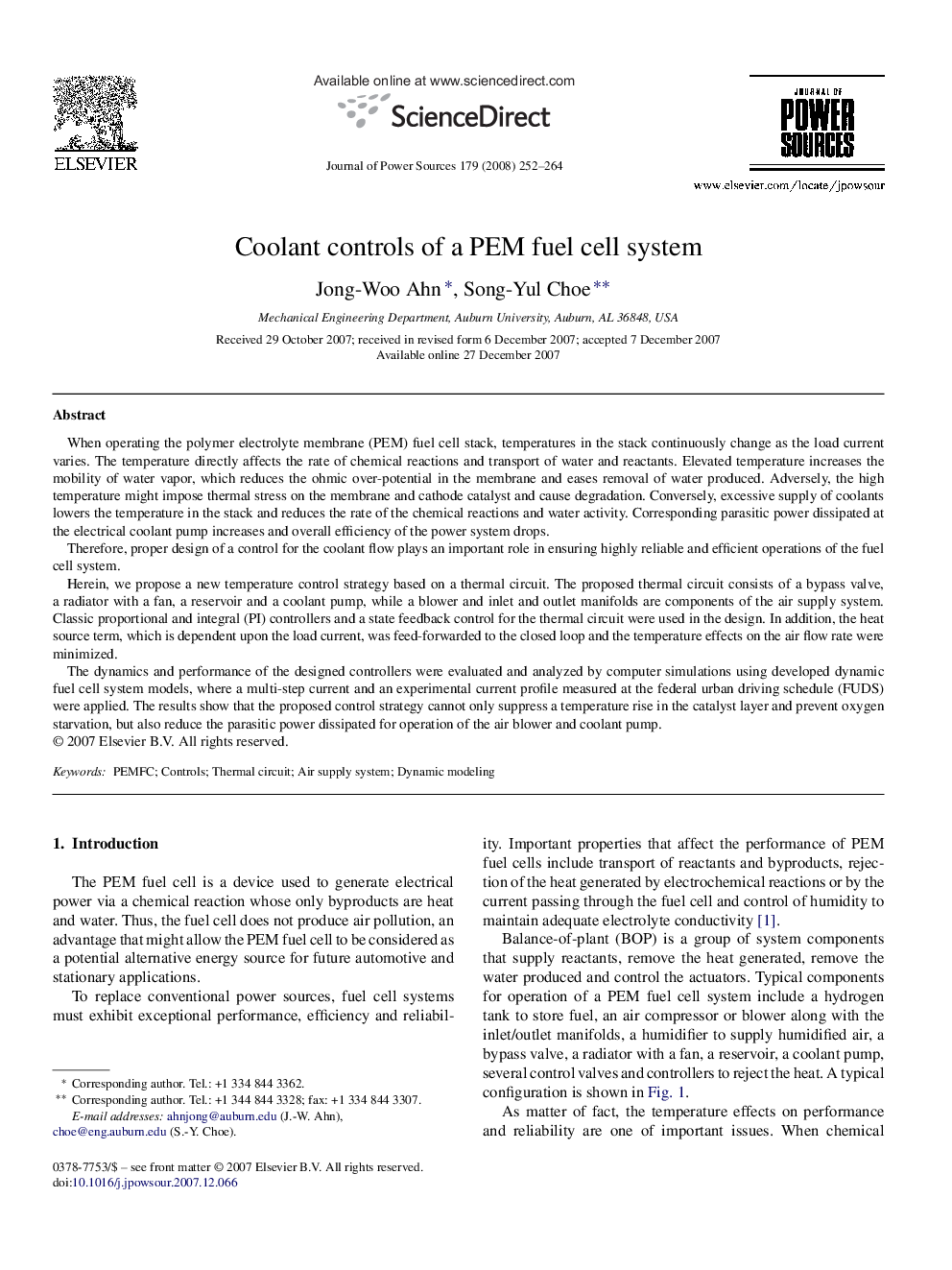| Article ID | Journal | Published Year | Pages | File Type |
|---|---|---|---|---|
| 1291428 | Journal of Power Sources | 2008 | 13 Pages |
When operating the polymer electrolyte membrane (PEM) fuel cell stack, temperatures in the stack continuously change as the load current varies. The temperature directly affects the rate of chemical reactions and transport of water and reactants. Elevated temperature increases the mobility of water vapor, which reduces the ohmic over-potential in the membrane and eases removal of water produced. Adversely, the high temperature might impose thermal stress on the membrane and cathode catalyst and cause degradation. Conversely, excessive supply of coolants lowers the temperature in the stack and reduces the rate of the chemical reactions and water activity. Corresponding parasitic power dissipated at the electrical coolant pump increases and overall efficiency of the power system drops.Therefore, proper design of a control for the coolant flow plays an important role in ensuring highly reliable and efficient operations of the fuel cell system.Herein, we propose a new temperature control strategy based on a thermal circuit. The proposed thermal circuit consists of a bypass valve, a radiator with a fan, a reservoir and a coolant pump, while a blower and inlet and outlet manifolds are components of the air supply system. Classic proportional and integral (PI) controllers and a state feedback control for the thermal circuit were used in the design. In addition, the heat source term, which is dependent upon the load current, was feed-forwarded to the closed loop and the temperature effects on the air flow rate were minimized.The dynamics and performance of the designed controllers were evaluated and analyzed by computer simulations using developed dynamic fuel cell system models, where a multi-step current and an experimental current profile measured at the federal urban driving schedule (FUDS) were applied. The results show that the proposed control strategy cannot only suppress a temperature rise in the catalyst layer and prevent oxygen starvation, but also reduce the parasitic power dissipated for operation of the air blower and coolant pump.
